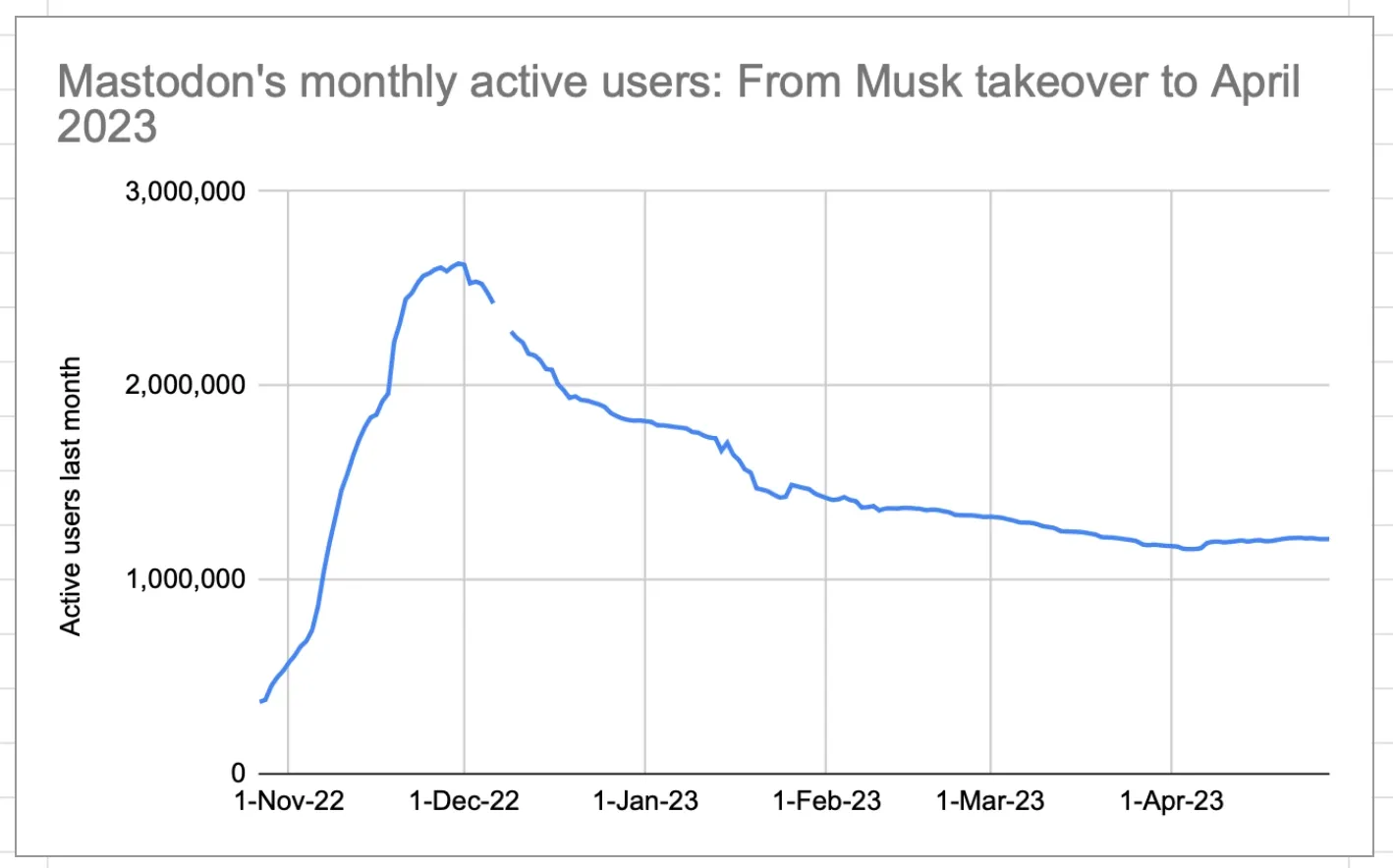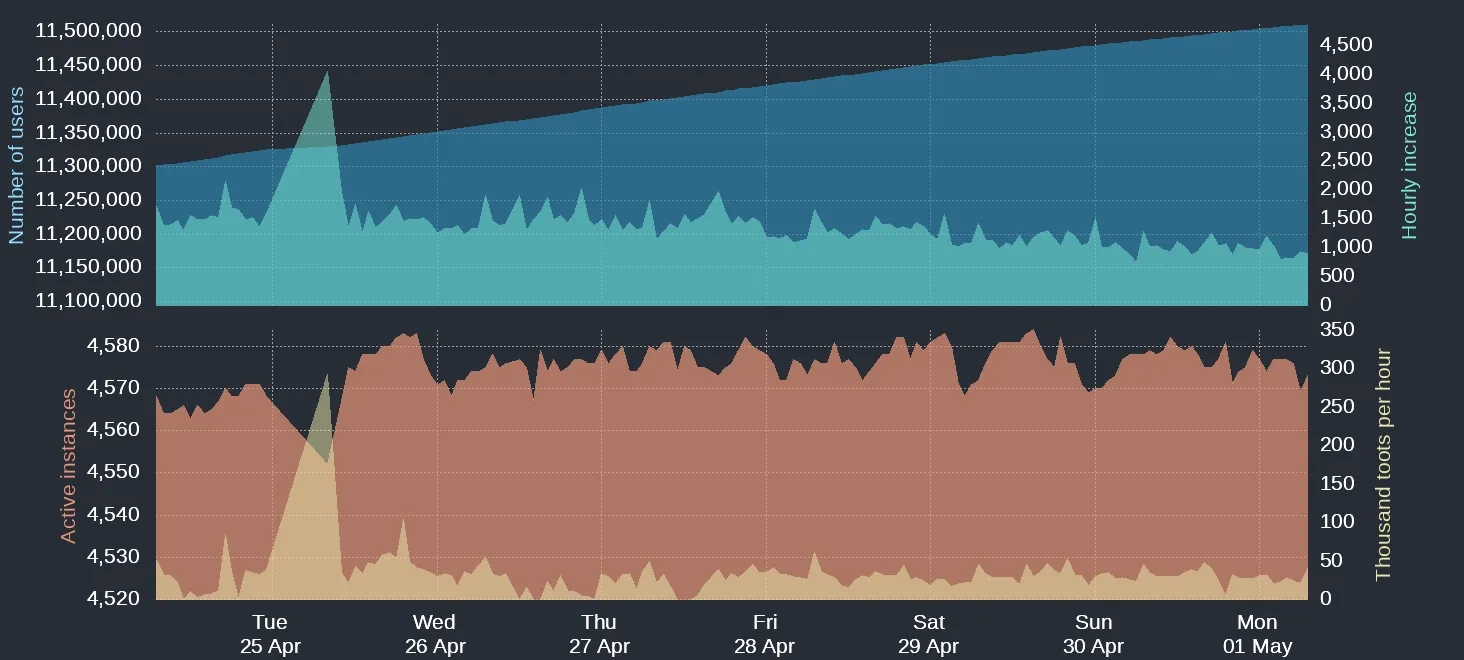Post-Twitter: What comes next?
When the company changed hands there were high profile predictions that it was days away from operational meltdown. Those predictions kept coming as the company laid off key workers and shut cloud services.
Twitter continues to function. There have been hiccups and outages. It may not be the smooth experience it once was. Service quality has degraded. But there has not been a meltdown.
It is not pretty. Twitter isn’t as much fun as it was. Many follow-worthy accounts have left. There is a noticeable increase in far right extremism, hate speech and unpleasant behaviour. Outright nastiness is commonplace. There's less Twitter joournalism.
Poor signal to noise ratio
In engineering terms, the signal to noise ratio is noticeably worse.
There’s evidence Twitter’s advertising revenue has fallen off a cliff. The social media site wants to fix this by converting free users into paying customers. This does not appear to be working.
The blue tick which tells other users you are a paying customer has become a badge of shame. High profile users who got a free blue tick under the new regime complain they look bad to their followers.
Yet Twitter stumbles on.
Likewise, the early predictions of mass flight and rapidly falling numbers were overstated. There has been flight, but not on a huge scale. Estimates range from one or two per cent up to five or six per cent. It’s tangible, but not significant. At least not yet.
Mastodon
To date, Mastodon has been the most popular alternative for disgruntled Twitter users.
In the run-up to Twitter’s sale, Mastodon had around 300k active users. Soon after the sale it hit a million active users. By the end of 2022 it was north of 2.5 million active users.
At the time of writing, May 1 2023, it is back down at about half that level: around 1.2 million active users.

Incidentally, these Mastodon user number stats come from this source. They are based on data collected by the Mastodon API.
Another estimate says there are 1.4 million active users, the source for this number is @mastodonusers@mastodon.social, an automated counter.

Rise and fall
The sharp rise and fall of Mastodon active user numbers is no surprise. Twitter users spot a degradation or witness an outrage, decide to bail, try something else, some decide that alternative doesn’t meet their expectations.
What’s important here for Mastodon is that today’s user numbers are about four times what they were six months ago. That’s impressive growth by any standard.
Impressive in Mastodon terms, but looking at Twitter numbers provides a useful reality check.
Mastodon in perspective
Mastodon's user numbers would be a rounding error in Twitter’s user numbers.
At the time of the takeover Twitter had around 450 million active users. That means, if we are generous, that Mastodon is about half a per cent of Twitter.
You can’t make a coherent argument that Mastodon is a threat to Twitter on that basis.
Even if you look at the 11.5 million or so people who have signed up for Mastodon, it is around 2.5 per cent the size of Twitter.
Potential
Mastodon has its merits and it has potential. The idea of a Fediverse is interesting. We’ll look at that in another post. It is thriving and lively, in that sense it is, for now, the nearest thing to a viable Twitter replacement for many users.
It can work in a browser and there are plenty of apps for Mastodon users.
There are compatible services that use the underlying open ActivityPub protocol that can work well with Mastodon. Micro.blog is an example of this.
Bluesky is a Twitter-like alternative funded by Twitter founder Jack Dorsey. That means it has a lot of attention. Possibly more attention than it deserves.
For now you need an invite to join Bluesky. It is decentralised, or soon will be, but not in the same way as Mastodon.
T2 is a Twitter reboot
Another alternative is T2, which was founded by ex-Twitter employees. It looks and feels a lot like early Twitter. That is the vibe the founders say they are aiming for. They want to focus more on community and less on building a viral, algorithmic monster that messes with users’ heads.
The interface is cleaner and there are, for now, few features. If you want to leave but enjoyed the pre-sale Twitter experience, this might be your best new online home.
T2 is young… the founders left Twitter in November. What you see today is not its finished form. Hell, the company doesn’t even have its official name yet. At the time of writing there is no app. The T2 moniker is a marker that hints at Twitter 2.0.
These things take time
Six months may feel like a long time when you’re moving at the internet’s pace, but it’s nothing when it comes to establishing a new social media service or running down an old one. That takes years.
For this reason, it is far too early to say what the post-Twitter landscape will look like. And realistically, unless Twitter collapses in a messy heap under the pressure of one too many bad leadership decisions, that service will likely continue in one form or another. To put things in perspective, did you realise MySpace continues to operate? Likewise Yahoo.
Both Mastodon and T2 look promising, if unfinished. Other alternatives are on the way. With luck we will see alternative ideas and approaches competing to be your next online home. That’s positive. The social media scene was, in that sense at least, stagnating before the Twitter sale.
Member discussion